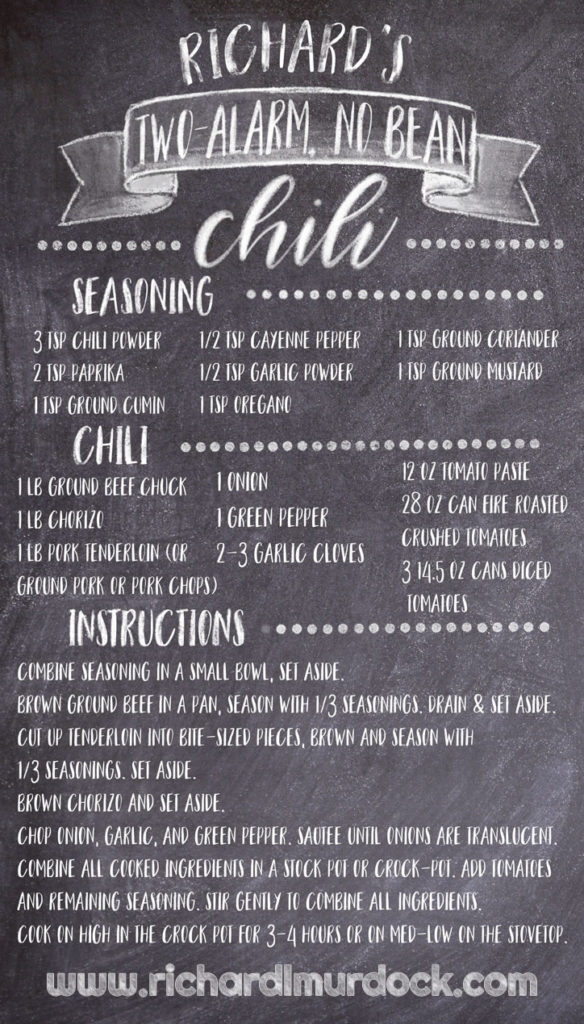This series of posts were created when I worked at a Marketing Automation company called “Loopfuse” in the early 2010’s. I was the Senior Manager of Technical Support and I posted blog content on the merits of Marketing Automation in general, as well as some of the technical aspects specific to that platform. I recently rescued these posts from the Wayback Machine for posterity and to remind myself of what I have written in the past. The images are missing, but you’ll get the idea.
If you’re a frequent reader of The Mouth of the Funnel, you’ll know that I like to relate Marketing Automation posts to my everyday activities like building a shower or making salsa. That’s because the process of implementing a successful Marketing Automation program can be broken down and implemented just like you would a construction project or a recipe. There are ingredients or materials that need to be combined in a particular manner to end up with the desired result.
Every endeavor that you take needs to have basics in place to make it successful. For example, if you want to create an entry for your next Halloween or Fall Festival chili cook off then you need to assemble the right ingredients and then put them together in the right way to get a great-tasting combination. Marketing Automation, just like chili, can be as complex or as simple as you want it to be. Using the same ingredients you can create anything from acceptable to award winning, but if you don’t use them to their potential they can also create a miserable failure that makes you not want to even try it again. Now you might think this post is like the one I did for Salsa back in 2012, but not entirely. That one talked about refining and tweaking your process. Today we’ll talk more about the structure of a good marketing automation program and how it all comes together for savory goodness.
The first thing I do when putting together my chili is a good spice mix. Likewise, the first thing I do when putting together a LoopFuse account is implement the tracking beacon to enable prospect tracking. Without spices you just have hamburger soup (it gets the job done but isn’t very exciting) and without Prospect Tracking you just have a glorified email program like any other one out there, and no real way to score or measure the success of your communication efforts. Make sure you have your web site tied to your Marketing Automation so you can see things like Visiting Companies, Overall Web Traffic (Anonymous and Known), and Returning Visitors. As a reminder, the LoopFuse tracking beacon also powers a good portion of our latest addition to the product, the Activity Stream. It only takes a few minutes to install the tracking beacon and once it’s done you’ll instantly start seeing traffic results.
You’re going to need something to tie your spice mix together with your other ingredients. That’s where I use diced tomatoes to create a base that brings things together. The forms on a website allow you to tie page view history of previously unknown visitors to their volunteered information. Just like different chili cooks prefer their own version of a liquid base, there are various ways to implement a prospect capture form on your site. We have our own solutions with the basic action URL submission or use of our API. We’ve also recommended Unbounce, Wufoo, and Fast Secure Contact Form for WordPress in the past. You really should be using form capture in some way or you’re missing out on adding new people to your sales pipeline.
In my opinion, a chili isn’t really complete without a couple of peppers of some kind in it. I personally prefer bell peppers, both green and red, but there is certainly room for a wide variety of ways to infuse extra flavors in your chili. Likewise, marketing automation isn’t complete without a good selection of email campaigns. These can be as simple as a plain-text introductory communication from your Sales team in response to a form submission or they can be as colorful as an HTML/CSS crafted promotional campaign. You will likely need different types of responses for each way you nurture your prospects. You can create email campaigns directly within the LoopFuse Email Campaign editor or you can just paste in your existing HTML templates to the system. Either way, make sure you have enough email content to cover your initial responses and a few follow up touches. Once you have those in place you can expand your Email content and have campaigns that speak to certain conditions met by your prospects. Maybe one prospect has seen the Pricing page AND have looked at a specific White Paper on your site. That combination gets a certain email while another prospect that only saw your Pricing page gets prompted to download the White Paper for more information. How you direct people through the sales process will depend on the email content you send them.
Now it’s time for some meat. I like a complex flavor profile so I use ground beef chuck, chorizo, and ground or cubed pork. This combination works for me and really helps give the chili some structure to bring all the other components in to play. I think if you’re missing this piece of the recipe it’s just not complete, and it’s really something else – like tomato soup, maybe. Without Lead Flow nurturing added to the mix you just have a newsletter delivery program or an Inbox auto-responder. We recommend people get started with a basic drip-campaign flow with a few touches after the initial lead capture form is filled out. You acknowledge people have filled out the form then send out a follow up campaign about 5-7 days later. Then there is a third email about 7-10 days after that – it’s dead simple but effective as long as your messaging is helpful and supportive with just a hint of salesmanship mixed in. From there you can get more complex with your lead flows if needed.
These are the basics you need for a successful Marketing Automation program at your company. If you’re missing a piece then, like I mentioned, you’re really using something else that’s not quite MA. It may be OK but it may not be the most successful combination that it could be. I’ll finish up by just mentioning a couple other things that could be used to take that recipe to the next level. Extras like Scoring and Grade are like cheese and sour cream. Not essential to the chili itself, but can certainly give it that extra punch to put it over the top. So even though I haven’t mentioned them here in the basics, they can be useful and shouldn’t be forgotten. So get out there and don’t be afraid to put together your MA program. Get the pieces together and do it and you’ll be happy with the results, I’m sure.
Now, I know some of you will be curious about my recipe for chili (and some won’t – that’s OK 😉 ) – so here it is!




